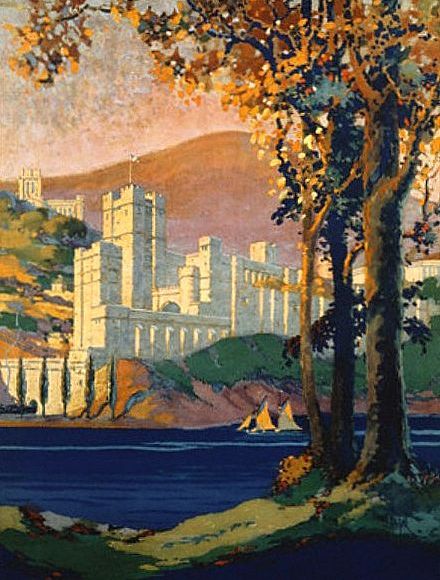The Hudson
About Andrew Cusack
 Writer, web designer, etc.; born in New York; educated in Argentina, Scotland, and South Africa; now based in London.
Writer, web designer, etc.; born in New York; educated in Argentina, Scotland, and South Africa; now based in London. read more
News
Blogs
Reviews & Periodicals
Arts & Design
World
France
Mitteleuropa
Knickerbockers
Argentina
The Levant
Africa
Cape of Good Hope
Netherlands
Scandinavia
Québec
India
Muscovy
Germany
Academica
Irving’s Sunnyside
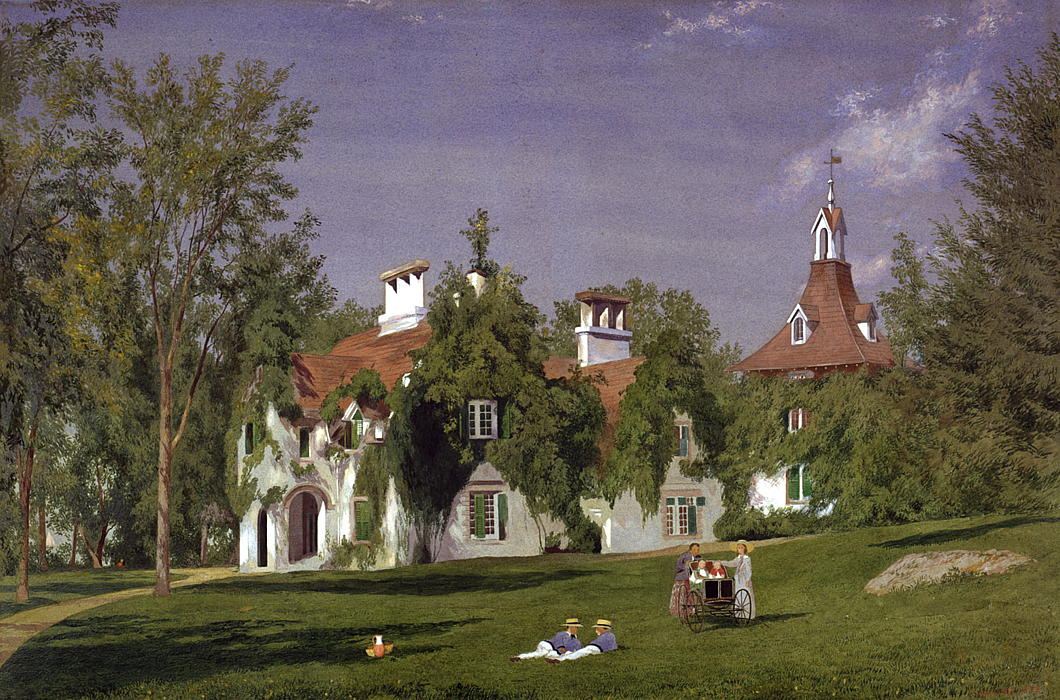
From the Westchester Herald (as reprinted in the Times of London, 24 April 1835):
On the premises just mentioned there is still standing an old stone house, built in the ancient Dutch style of architecture, during the French war, by Wolfred Acker, and afterwards purchased by Van Tassel, one at least of whose descendants has been immortalized in story by the racy pen of its present gifted proprietor.
It is the identical house at which was assembled the memorable tea-party, described in the legend of Sleepy Hollow, on that disastrous night when the ill-starred Ichabod was rejected by the fair Katrina, and also encountered the fearful companionship of Brom Bones in the character of the headless Hessian.
The characters in this delectable drama are mostly known to our readers; but time, that tells all tales, enables us to add one item more, which is, that the original of the sagacious schoolmaster was not the individual generally considered as such, who still resides in this country, but Jesse Martin, a gentleman who bore the birchen sway at the period of which the legend speaks, and who afterwards removed further up the Hudson, and is since deceased.
The location is a most delightfully secluded spot, eminently suited to the musings and mastery of mind; and it is the design of the proprietor, without changing the style or aspect of the premises, to put them in complete repair, and occupy them as a place of retirement and repose from the business and bustle of the world.
The Headless Horseman & Hallowe’en
Washington Irving’s Legend of Sleepy Hollow — perhaps better known as the tale of the Headless Horseman — is inevitably and almost universally linked to the great feast of Hallowe’en.
There are obvious reasons for this in that Hallowe’en has become the festival of ghoulish otherworldliness, sadly now devolved into plastic mawkishness in a manner old followers of the Knickerbocker ways must surely condemn and mourn.
But this tale is always worth a revisiting; even now in early Advent.
Irving purists — we exist — might point out there there is no indication Ichabod Crane’s fateful evening ride through the Hollow took place on Hallowe’en.
Indeed, Hallowe’en is not mentioned at all in the text of the Legend, and all the author shares with us regarding the date is that it was “a fine autumnal day”:
…the sky was clear and serene, and nature wore that rich and golden livery which we always associate with the idea of abundance.
The forests had put on their sober brown and yellow, while some trees of the tenderer kind had been nipped by the frosts into brilliant dyes of orange, purple, and scarlet.
Streaming files of wild ducks began to make their appearance high in the air; the bark of the squirrel might be heard from the groves of beech and hickory-nuts, and the pensive whistle of the quail at intervals from the neighboring stubble field.
It makes for a luscious harkening of old Westchester and the Hudson Valley in the early days of the republic.
Tastier still is the scene set as the Yankee newcomer Crane enters the home of an old Dutch household for the evening’s revelries:
Fain would I pause to dwell upon the world of charms that burst upon the enraptured gaze of my hero, as he entered the state parlor of Van Tassel’s mansion.
Not those of the bevy of buxom lasses, with their luxurious display of red and white; but the ample charms of a genuine Dutch country tea-table, in the sumptuous time of autumn.
Such heaped up platters of cakes of various and almost indescribable kinds, known only to experienced Dutch housewives!
There was the doughty doughnut, the tender oly koek, and the crisp and crumbling cruller; sweet cakes and short cakes, ginger cakes and honey cakes, and the whole family of cakes.
And then there were apple pies, and peach pies, and pumpkin pies; besides slices of ham and smoked beef; and moreover delectable dishes of preserved plums, and peaches, and pears, and quinces; not to mention broiled shad and roasted chickens; together with bowls of milk and cream, all mingled higgledy-piggledy, pretty much as I have enumerated them, with the motherly teapot sending up its clouds of vapor from the midst—Heaven bless the mark!
I want breath and time to discuss this banquet as it deserves, and am too eager to get on with my story.
Happily, Ichabod Crane was not in so great a hurry as his historian, but did ample justice to every dainty.
So celebrate Hallowe’en not with plastic costumes and cheap trinketry but with Dutch delicacies and tasty treats. (And for helpful suggestions, see Peter G. Rose’s Food, Drink, and Celebrations of the Hudson Valley Dutch.)
Put aside the vampire capes and risqué nurses’ kit and, amidst candles and pumpkins of all shapes and sizes, think of the Dutch Hudson of long ago that lingers still in heart and mind.
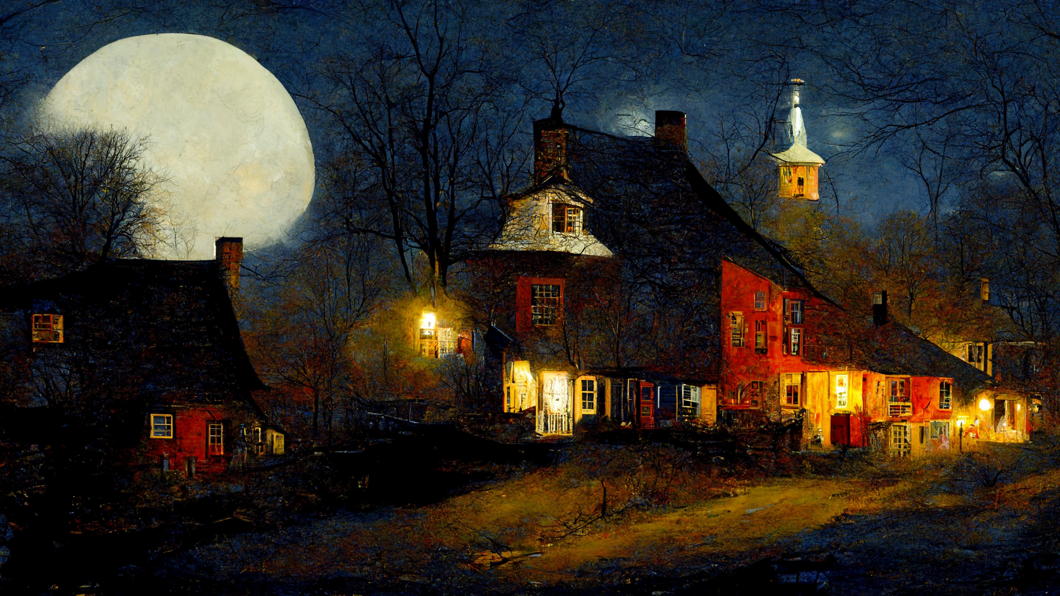
Autumn by the Hudson
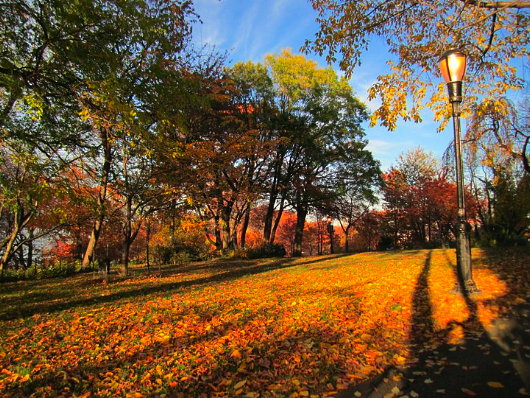
Some consider winter the time of death and desolation but I disagree. Winter for me is the incubation, the child in the womb, the seed beneath the soil waiting for the moment to sprout. Autumn, rather, is the time of melancholy and retrospection. Most of the trees here in New York are now bare, but before the leaves fell our friend the Brooklyn-based graphic & web designer Emily E. Owen (website here) caught these photographs of New York in the brilliant crepuscular light. The views are from Fort Tryon Park at the very top of the isle of Manhattan. (more…)
Baron Bossom’s Bridge
The Unbuilt ‘Victory Bridge’ Crossing the Hudson River at Manhattan
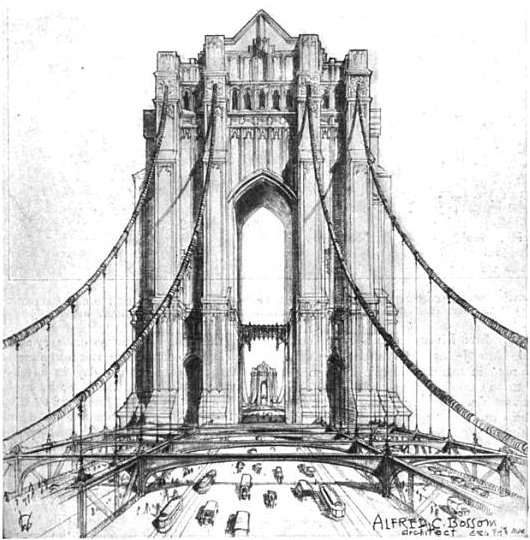
After the victory of America and her “co-belligerents” in the First World War, a temporary victory arch was erected out of wood and plaster to welcome the troops home from Europe. After the arch was dismantled, however, discussions soon arose on how to permanently commemorate the war dead of New York, with a surprising variety of suggestions made. A beautiful water gate for Battery Park was suggested, with a classical arch flanked by Bernini-like curved colonnades, so that a suitable place existed to welcome important dignitaries and visitors to New York. (Little did they know how soon the airlines would replace the ocean lines). Another proposal was for a giant memorial hall located at the site of a shuttered hotel across from Grand Central Terminal, while others suggested a bell tower.
An entirely different proposal, however, was made by the New York architect Alfred C. Bossom (later ennobled as Baron Bossom of Maidstone). Bossom, an Old Carthusian, was an Englishman by birth and eventually returned to his native land, where (in 1953) he gave away the future prime minister Margaret Roberts at her marriage to Denis Thatcher. He himself served in parliament from 1931 until 1959, excepting his wartime Home Guard service. Jokes were often made about his surname resembling both “bottom” and “bosom”. Upon being introduced to Bossom, Churchill jested “Who is this man whose name means neither one thing nor the other?” (more…)
Oranje in New York
The Prince & Princess of Orange Celebrate 400 Years of the Hudson
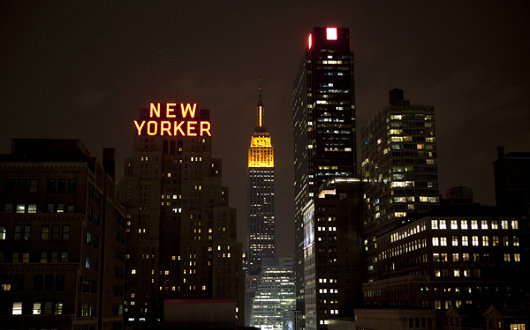
THE CONNECTIONS BETWEEN New York and the Netherlands go back far; back to the very beginning indeed, to 1609 when Henry Hudson, in the service of the Dutch, first set eyes on the greatest harbour of the Atlantic seaboard. The four-hundredth anniversary of that event brought the Prince and Princess of Orange, the heirs to the Dutch throne over to old New Amsterdam for the culmination of the year’s quadricentenary celebrations.
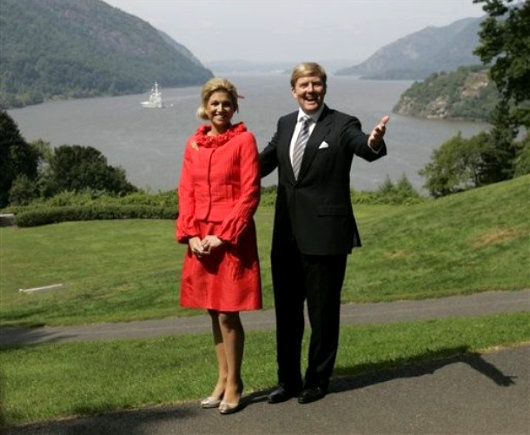
After their arrival in the Empire State, Prince Willem-Alexander and Princess Maxima sped straight up the Hudson Valley to West Point, the pearl of the river. The Kingdom of the Netherlands and the United States are official military allies, with at least 1,770 Dutch soldiers serving in Afghanistan, plus an undisclosed number of special forces from the Korps Commandotroepen. (more…)
The Tappan Zee in the Age of Rig & Sail
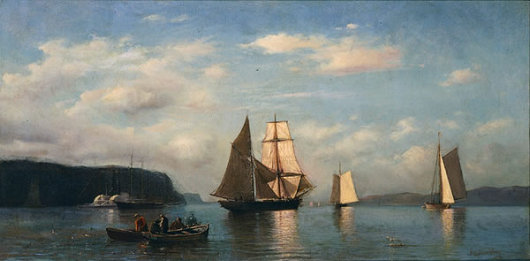
Julian Oliver Davidson, The Hudson River from the Tappan Zee
Oil on canvas, (size not on record)
1871, Private collection
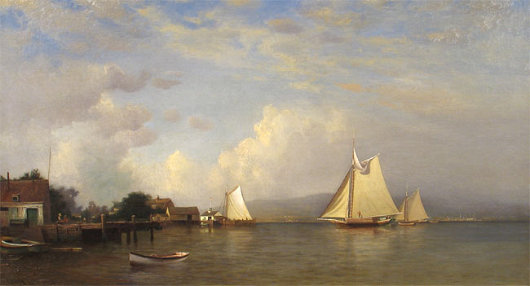
Francis Augustus Silva, On the Hudson near Tappan Zee
Oil on canvas, 20 in. x 36 in.
1880, Private collection
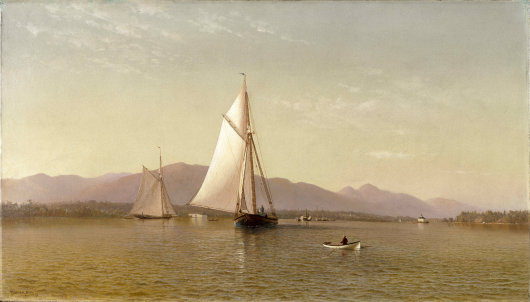
Francis Augustus Silva, The Hudson at the Tappan Zee
Oil on canvas, 24 in. x 42 3/16 in.
1876, Brooklyn Museum
Along the Hudson
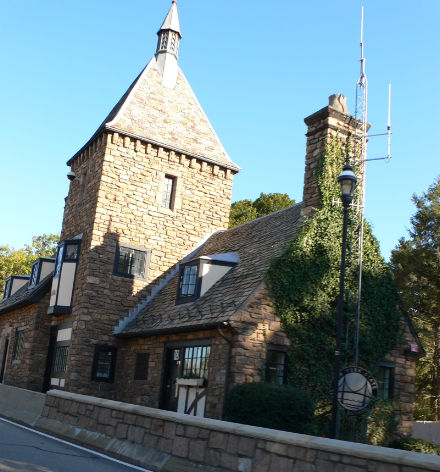
THE TOLLBOOTH AT THE Bear Mountain Bridge is built in a whimsical style meant to harken back to the Dutch patriarchs of old who roamed and ruled (and fell asleep in) these lands. The Bear Mountain Bridge spans the Hudson River between Bear Mountain and Anthony’s Nose, and was the longest suspension bridge in the world upon its completion in 1924. (As of 2007, it is the 62nd longest suspension bridge). The South Gate of the Hudson Highlands is composed of Anthony’s Nose rising from the east bank and Dunderberg (lit. thunder mountain) on the west, while Wind Gate between Breakneck Ridge and Storm King Mountain marks the northern reach of the Highlands. (more…)
USMA 37, Temple 21
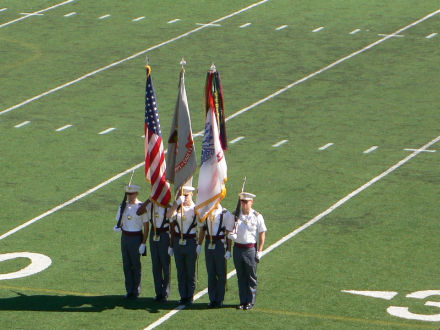
A HIKE UP into the Hudson Highlands, to see West Point trounce Temple University 37-21. (The last time I saw Temple play at Michie Stadium was in September 1994, when they beat Army 23-20). Army opened this game well by scoring a touchdown and field goal in the first minute, but gave the Temple Owls too much leeway, matching Army 21-21 by the half. Luckily, the Black Knights pulled through in the second half and finished the Owls off rather nicely. (more…)
Rip van Winkle
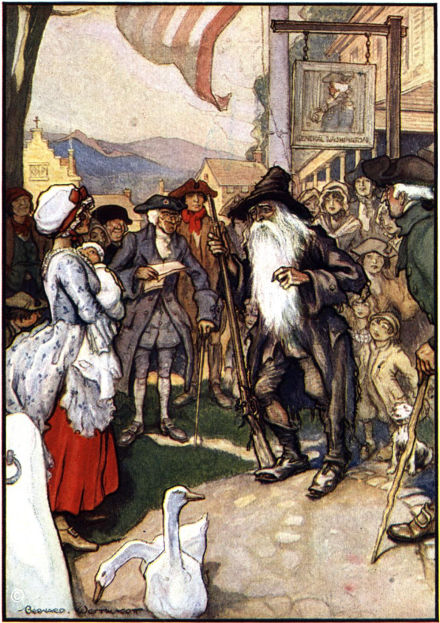
POOR RIP van Winkle; I always felt bad for him. He falls asleep for twenty years, and returns to his own native village where is now unknown and taken for some strange vagrant. “I am a poor quiet man, a native of the place, and a loyal subject of the king, God bless him!” he exclaims, in blissful ignorance of the Revolution which took place during his slumber. “A tory! a tory! a spy! a refugee! hustle him! away with him!” cry the by-standers.
I have long thought that Washington Irving was trying to make a subtle traditionalist point here: the definition of a good citizen has been arbitrarily changed. If a man was a good New Yorker in 1765 and hasn’t changed, why is he a traitor in 1785? It’s clearly ridiculous, except to proto-Jacobins and ideologues.
Anyhow, the lesson of the story: drink not from the flagons of odd-looking personages playing nine-pins amidst the Hudson Highlands.
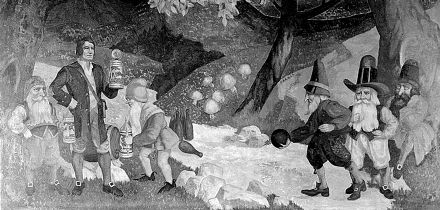
Previously: Rip van Winkle
Empire State
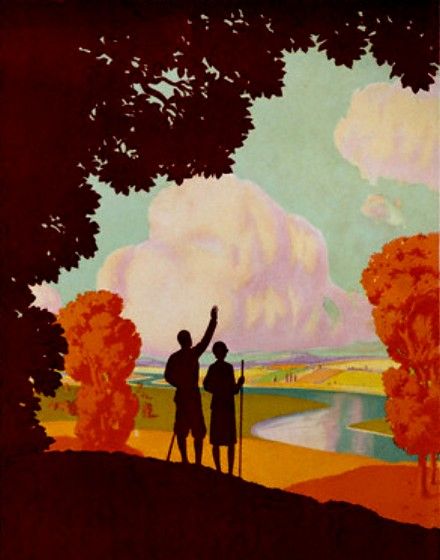
Having been duly capped on the head by the Rt. Hon. Menzies Campbell QC MP with John Knox’s breeks last Thursday I have returned to the land of my birth a Master of the Arts. Details of the various rites and festivities are forthcoming, but in the mean time I share with you these three travel posters from back in the day when they made proper travel posters. All three advertise our blessed Empire State, two of them West Point, the glorious gothic crown of the Hudson. Excelsior!
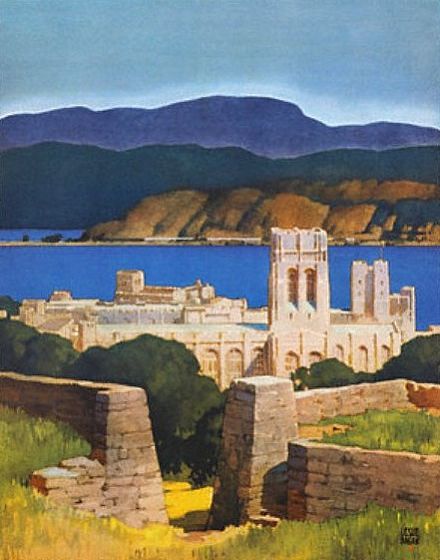
Click on the images for the full posters.
Search
Instagram: @andcusack
Click here for my Instagram photos.Most Recent Posts
- Sag Harbor Cinema March 26, 2025
- Teutonic Takeover March 10, 2025
- Katalin Bánffy-Jelen, R.I.P. March 3, 2025
- Substack Cusackiensis March 3, 2025
- In the Courts of the Lord February 13, 2025
Most Recent Comments
Book Wishlist
Monthly Archives
Categories

